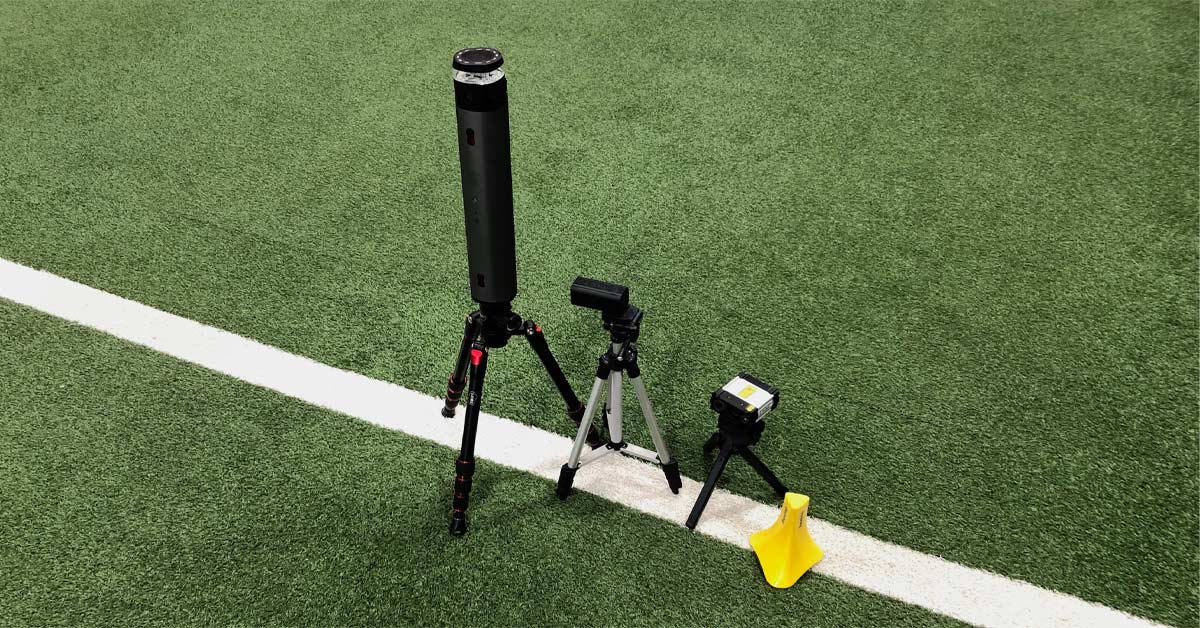Citius, Altius, Fortius: Let’s Talk Science!
Share




The Olympic motto “Citius, Altius, Fortius”, which is Latin for “Faster, Higher, Stronger”, reflects the history of the Olympic Games that have long been closely associated to science. It is simply about goals set by scientists, engineers, and other inventors, who all work hard with athletes to develop new technical skills, sports equipment, and clothing.
Inspired by a religious festival held in honor of the king of gods Zeus in Olympia, Greece, the Olympic Games are considered the leading sports competition worldwide. Similar to their ancient predecessor, where people from all over Greece attended to watch and participate in the festival, today, with around 200 nations participating, the Olympic Games are held every four years. It includes the Summer and Winter Games occurring alternatively two years apart.
 Source: Flicker
Source: Flicker
Throughout the history of the modern Olympic Games, science has always been at the forefront. Scientific innovation and the use of emerging technology in sports have helped in the development of the overall athletic performances, including speed, strength, skills, and beauty.
The Olympic Games have not been without science and technology. Below are just a few of the examples highlighting that role.
Anthropometry
Bringing together the best athletes worldwide in different sports, the Olympic Games have provided a great opportunity for studying the size and composition of the human body, and its relation to athletic performances.
Anthropometric measurements have provided interesting analysis of changes in the athletes’ body size and shape over time. In the 1900 Olympic Games in Paris, for example, an anthropometric program was undertaken on volunteer athletes, where height and weight measurements of different segments of the body were taken. Moreover, medical examinations for lung function, oxygen consumption measurement, and determining fluid loss by weight before and after exercise were undertaken. Photographs were also taken in three aspects; front, back, and side during performance.
Over the decades, tests of anthropometry developed to include collecting data from the Olympic Games’ participants, such as cardiovascular, X-ray, metabolic data, height, weight, birth date, country, and sports. For many sports, being short, tall, light, or heavy is an advantage; proving that the ideal body shape and composition has a wide range of options, all depending on the sport, playing position, and the fitness level of the athlete.
.jpg) Source: Mitri
Source: Mitri
Nutrition
Food has always been of great importance in the life of athletes. Athletes’ need for proteins to build their muscles, and carbohydrates for boosting energy during the Ancient Olympic Games was not different from today. In the time of Ancient Greece, most of the protein eaten by Greeks was fish due to its proximity to the sea. Their diet consisted mainly of bread, vegetables, and fruits; forming what is considered now the Mediterranean Diet, which is linked to low heart disease rates in the region.
Early records state that early Olympians opted to a cheese-and-fruit based diet, later on shifting to protein diets. The legend of the renowned Greek wrestler, Milo of Croton, who won the wrestling championship in six Olympic Games, was cited by Athenaeus in the ancient text The Deipnosophists, stating that “Milo of Croton used to eat 20 pounds (9 kilograms) of meat and as many of bread …. At Olympia, he put a four-year-old bull on his shoulders and carried it around the stadium, after which he cut it up and ate it all alone in a single day.” Other ancient diets avoided eating bread right before the competition, eating dried figs instead, for its believed importance in building muscles and stamina.
Similarly, the diets of Olympic athletes today have great impact on their performances. Researches over the past years were conducted in order to provide athletes with the appropriate knowledge needed for improving their performances. Modern day athletes, coaches, and officials are more aware of their intakes, seek advice, and look for advantages in them. Nevertheless, sport nutrition is still a growing discipline and needs further research and knowledge.

Source: austrimag
Drug Testing
Technological advancements in sporting performance should abide to the rules of sports. As early as the Ancient Olympic Games, evidence suggests that athletes and Roman gladiators used performance-enhancing drugs, but historians studying ancient Greek and Roman texts are not sure if back then regulatory efforts about it even existed.
In the early history of the Olympics, there were rules against using performance-enhancing substances; however, drug testing was not enforced. In the 1960s, that danger was highlighted when the Danish cyclist Knud Jensen collapsed during a race in the 1960 Summer Olympics in Rome, after taking amphetamines*; leading to a fatal skull fracture. Accordingly, several efforts started to call against performance-enhancing drugs, in 1968, the first official drug testing was conducted on competing athletes by the International Olympic Committee to end the danger of that illegal activity that has been taking place behind the Olympic Games scenes.
Throughout the centuries, scientific advances in amphetamine production have led to dangerous effects in athletes’ health. Nevertheless, drug testing methods have improved to keep pace with the developing methods of cheating. Thus, drug testing technology has witnessed great improvement throughout the decades, leading to an increased number of athletes discovered for doping violations.
 © Evlakhov Valeriy/Shutterstock.com
© Evlakhov Valeriy/Shutterstock.com
Timing and Scoring Systems
Since the first modern Olympic Games in 1896, stopwatches have been essential in determining the time for the winners. In the 1912 Olympics, a device invented by the Swedish Engineer, Ragnar Carlstedt, was introduced for athletic track events. Using a starting pistol connected to an electronic automatic timing system, the device stops manually by a timing allocated for each runner, and photographs the winner as they cross the finish line.
Over the centuries, timing technology has continued to develop. In 1932, the Kirby camera, which simultaneously photographed the finish line and imprinted the time on each frame, was introduced. Later on, the continuous slit camera—on which all athletic timing systems used today are based—was introduced in the 1948 Olympic Games. Since then, the technology has developed with higher resolutions, reaching the Quantum Timer that measures the accuracy to one–millionth of a second.
Track events are not the only sports that have witnessed significant changes in their timing systems. Other sports that require precise time measurements, such as swimming events, use more complicated timing systems. In 2008, for example, swimmer Michael Phelps, was announced the winner as he finished one-hundredth of a second ahead of his competitor Milorad Cavic. Thanks to the technology, the camera was able to record 100 frames a second to confirm Phelps as the winner despite that slightest of margins.
Today, we can witness a selection of high-technology timekeeping systems that include high-speed digital cameras, electronic touch pads, infrared beams, and radio transmitters, just naming a few.
Technology has prevailed over the scoring systems in the Olympic Games too. In Taekwondo, for example, a more developed technology for obtaining a fairer scoring system has been utilized. In 2012, sensors were placed in the vests to record successful hits as they were activated by magnetic socks. In the 2016 Olympic Games, sensors in the headgear transmitted signals wirelessly were used too; for the first time, the athlete had the right to ask for a video replay within the contest.
 Source: simplifaster
Source: simplifaster
If the Olympic Games inspire millions of people worldwide through the athletes’ hard work and pushing boundaries, science has relentlessly been standing in the back scene. The role science plays in the Olympic Games is a very rich topic covering various aspects, including data analysis, result prediction, and studying the anthropology of athletes. The Olympic Games is not only about how fast athletes run, how high they jump, or even how strong they lift; it is about culmination over the years of study, research, training, and sacrifice.
Glossary
*Amphetamine is a powerful central nervous system stimulant that produces wakefulness and alertness. Medically, they are used in treating sleep disorders, obesity, and fighting depression. Some people take amphetamines to enhance their athletic performance.
References
britannica.com
forbes.com
news.nationalgeographic.com
topendsports.com
wcpo.com
Banner image